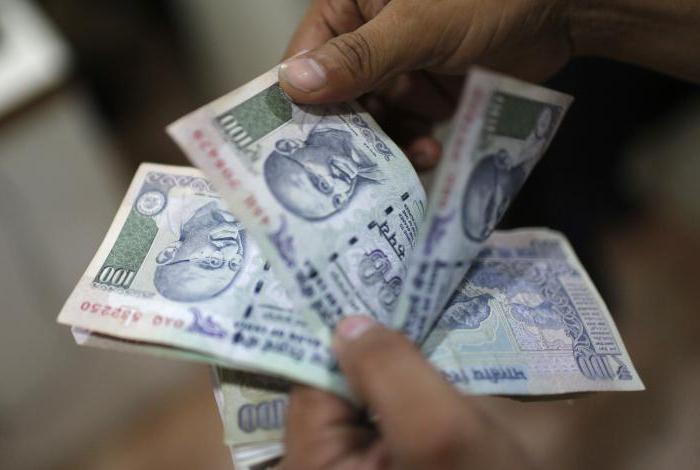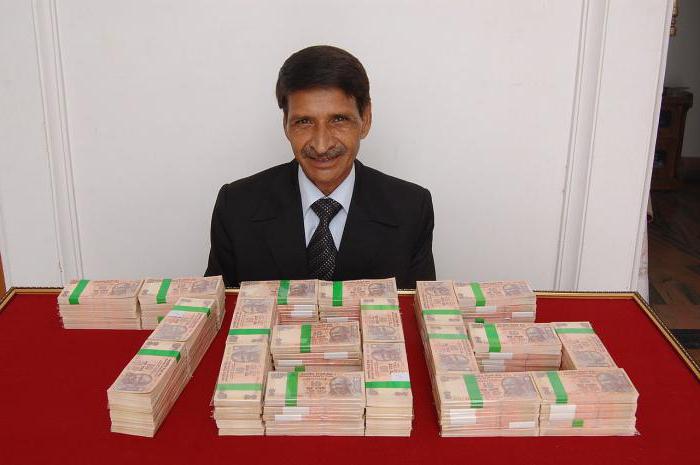For a long period of its existence, India was under the control of various countries. This mainly applies to England. This fact left a serious imprint on many different elements, including what eventually became the currency of India.
History of occurrence
In fact, the first mention of the country's monetary units dates back to 1542. Many travelers are interested in the name of the official currency of India. The answer is very simple: since its inception, these funds have received the name "rupee", which literally translates simply as "minted silver." Subsequently, the name stuck, and it was this unit that became the main payment instrument in the country.
After the establishment of British influence in this region, in 1677, the first rupee was issued, which was minted by the East India Company. In general, for many years (and even centuries) in the territory of present-day India, there were several options for such means of payment at once, each of which had its own unique value. From 1835 to 1893, a special silver standard for unified rupees was in effect in this region. It was enshrined in law that any person who possesses silver can come to the mint and exchange it for an appropriate amount of rupees, which, again, were minted from silver.
Gradually, as the situation in the world worsened, connected with the First World War, World War II and subsequent crises, the monetary unit, which had initially considerable value, depreciated more and more. Now the currency of India is quite cheap, for one dollar you can buy about 60 rupees. And this despite the fact that back in 1947 the ratio was 1 to 3.3, that is, for three point and three tenths of rupees, you could buy one US dollar.

Banknotes of India
In the same way as the official currency of India is called, the banknotes issued by this country are also called. Paper money They are printed regularly, but the old series are not removed and have equal circulation with modern bills. That is why absolutely different in appearance and in terms of protection against counterfeit paper can have the same purchasing power. There are many value options for banknotes, ranging from 1 rupee to a thousand. Each such payment unit looks quite colorful and bright, and the main colors used for printing banknotes are ocher or olive.

Coins of india
For most of the period that the Indian currency went through, there were many variations of various coins in the country, but the most common are silver rupee, golden muhr and copper paise. Gold coins were not accepted as a means of payment, but they were actively used for accumulation. In accordance with the law, in one muhra there was exactly the same amount of gold as in one rupee of silver. In turn, one double rupee included 16 double pais, 64 ordinary or 192 half. As already mentioned, all paisa were made of copper. It is precisely because of this diversity, and also considering the fact that double paise was called anna, and half of paise is called a share, and the question arose about what the currency of India is called. It should be noted that at the moment in circulation there are coins in denominations from 10 paise to five rupees.

Interesting features
The national currency of India was a rather peculiar means of payment, especially at first, until 1957, when, finally, the standard decimal system of calculation for other countries was adopted. So, for example, back in 1916, one rupee was worth sixteen English pence, and she shared on the same basis into 16 ann. Each anna, in turn, was divided into four paisas, and each pais was divided into three paisas. In general, for a modern person, the system is not very convenient and understandable, which, nevertheless, has been the main one in this region for almost half a millennium. Another rather expected, but no less interesting fact: absolutely on all banknotes of India there is a portrait of the greatest citizen of this country for all the time of its existence - Mahatma Gandhi.

Summary
Despite all the attempts of the government, every year the currency of India is becoming cheaper and cheaper against the dollar. In principle, the same thing can be said about any other means of payment, since world wars, and then financial crises, one way or another, but had a significant impact on all countries without exception. Nevertheless, recently the situation has begun to be corrected at least a little. For example, if in 2013 it was possible to buy 68 rupees for one US dollar, then as of 2015 it was already about sixty. Given that before this means of payment has steadily lost its price, maintaining such a position is itself a huge achievement that should not be underestimated.